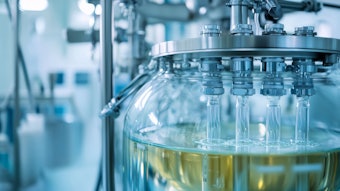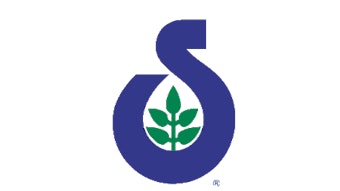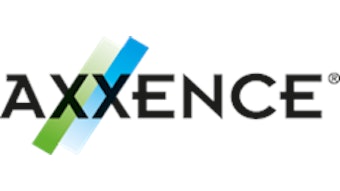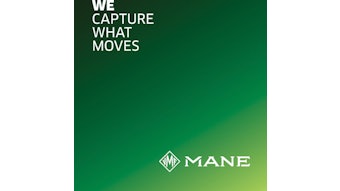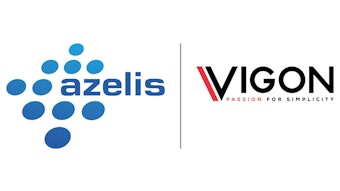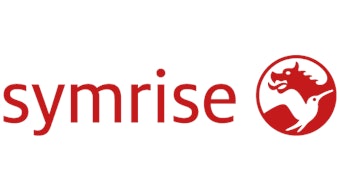Givaudan reported its 2011 financials, with group sales totaling CHF3,915 million, an increase of 5.2% in local currencies but a decline of 7.6% in Swiss francs when compared to the company’s 2010 numbers. Sales for the fragrance division were CHF1,833 million, an increase of 4.7% in local currencies and a decline of 7.8% in Swiss francs, and sales for the flavor division were CHF2,082 million, an increase of 5.7% in local currencies and a decline of 7.5% in Swiss francs compared to 2010.
Givaudan CEO Gilles Andrier commented, “Our 2011 results are a convincing demonstration of the continued value we bring to our customers. The business achieved a strong sales momentum in a tough environment and a significant profit improvement in the second half of the year. We are well on track for 2012 and to deliver on our mid-term targets.”
The company’s gross profit margin decreased to 42.6% from 46.1% as a result of the sharp and broad-based increase in raw material costs. Givaudan successfully implemented price increases in collaboration with its customers. These price increases started to become effective in the course of the second quarter of the year.
EBITDA declined to CHF758 million in 2011 from CHF887 million last year. On a comparable basis, excluding integration and restructuring expenses, EBITDA decreased to CHF790 million from CHF963 million reported last year. The continued strengthening of the Swiss franc against all currencies, and in particularly the US dollar, as well as the increase in raw material costs, significantly impacted absolute levels of EBITDA. When measured in local currency terms, EBITDA on a comparable basis declined by 8.6%. The comparable EBITDA margin was 20.2% in 2011, compared to the 22.7% reported in 2010, driven by a decline in the gross margin. The strengthening of the Swiss franc against all major currencies did not have any significant impact on EBITDA margins.
Operating income declined to CHF443 million from CHF 556million last year. On a comparable basis, excluding CHF37 million of integration and restructuring costs, operating income declined to CHF480 million in 2011 from CHF655 million in 2010. The operating margin on a comparable basis decreased to 12.3% in 2011 from 15.5% reported last year. When measured in local currency terms, operating income on a comparable basis decreased by 14.4%.
Net income decreased to CHF252 million in 2011 from CHF340 million in 2010 mainly as a result of the strengthening Swiss franc. This represents 6.4% of sales in 2011, versus 8% in 2010. Basic earnings per share decreased to CHF27.71 in 2011 from CHF37.87 in the previous year.
Givaudan delivered an operating cash flow of CHF456 million, down from the CHF730 million generated for the comparable period in 2010, mainly due to a lower EBITDA and an increase in inventories. Inventories increased due to the higher raw material prices and higher safety stock required during the SAP implementation in Asia. As a percentage of sales, working capital increased, mainly as a result of higher inventory levels. Accounts receivable also increased at the end of the year, as a consequence of the strong sales performance in the last quarter.
Total net investments in property, plant and equipment were CHF176 million, up from the CHF105 million incurred in 2010, mainly driven by the investment in the centralized flavor production facility in Hungary. Intangible asset additions were CHF 86million in 2011, a significant portion of this investment being in the company's Enterprise Resource Planning (ERP) project based on SAP. Implementation was completed in North America and is on progress in Asia, with the project on track to be completed in June 2012. Operating cash flow after investments was CHF194 million, down versus the CHF553 million recorded in 2010. Free cash flow, defined as operating cash flow after investments and interest paid, was CHF117 million in 2011, down from CHF437 million in 2010, mainly driven by the lower EBITDA, additional working capital requirements and higher investments in 2011. Free cash flow as a percentage of sales was 3%, compared to 10.3% in 2010.
During 2012, the company will continue to work in close collaboration with its customers to make the necessary adaptation of its prices to reflect the sharp increase in input costs. As the company will complete the full roll out of SAP, it will continue to leverage on this investment through initiatives such as shared services, as well as ensuring that its supply chain is efficient and requires reduced working capital levels.
Mid-term, the company’s overall objective is to grow organically between 4.5–5.5% per annum, assuming a market growth of 2–3%, and to continue on the path of market share gains over the next five years. By delivering on the company's five pillar growth strategy—developing markets, health and wellness, market share gains with targeted customers and segments, research and sustainable sourcing—Givaudan expects to outgrow the underlying market and to continue to achieve its industry-leading EBITDA margin while improving its annual free cash flow to between 14% and 16% of sales by 2015. Givaudan confirms its intention to return above 60% of the company's free cash flow to shareholders once the targeted leverage ratio, defined as net debt, divided by net debt plus equity, of 25% has been reached.
Givaudan’s fragrance division recorded sales of CHF1,833 million, an increase of 4.7% in local currencies and a decline of 7.8% in Swiss francs. After a good sales performance in the first half year, sales continued to show strong growth in the second half, helped by price increases. The growth was driven by a strong performance in consumer products, particularly in the developing markets of Latin America and Asia Pacific. Total sales for fragrance compounds (the fine fragrances and consumer products divisions combined) increased 5.3% in local currencies and declined by 7.7% in Swiss francs to CHF1,587 million from CHF1,719 million. Fragrance ingredients sales increased by 0.7% in local currencies.
In 2011, further investments were approved to expand the infrastructure in the developing markets. For example, in Moscow the creative and commercial teams moved into new and expanded offices, while in India Givaudan added additional floor space to expand the creative and development center in order to meet the demands of this high growth market. The year also saw the further expansion of the production capabilities in the fragrance ingredients manufacturing site in Pedro Escobedo, Mexico. In Singapore, a state-of-the art creative, commercial center and a high volume production center was approved during the year, which should be operational in 2013.
Fine fragrances sales grew by 0.2% against the very strong comparables of the previous year. The year started with sales in the first half below 2010 levels. However, growth increased in the second half of the year driven by a strong pipeline of new wins across all major customer categories and distribution channels. Looking at the performance on a regional basis, Latin America delivered the strongest growth, as a result of new wins and volume gains with most customer accounts. In Europe, Africa and the Middle East sales decreased as the new wins were unable to offset business erosion, partially attributed to the restocking impact of 2010.
Sales for the company’s consumer products business unit increased by 6.9% in local currencies against last year's high comparables. This increase was across all customer groups as well as all regions. Sales in developing markets grew faster than sales in mature markets. Asia Pacific reported strong growth led by international customers, especially in the fabric care segment, with China, Indonesia and Vietnam recording the strongest increases. All customer groups contributed to the growth in Latin America, with an excellent performance in Mexico. In Europe, Africa and the Middle East, sales increased across all customer segments, particularly in the developing markets. In North America, sales growth was driven by local and regional customers, with a double-digit increase in both fabric care and home care. On a segment basis, sales in the fabric care and oral care achieved double-digit growth. Home care sales also rose, especially in Asia Pacific, while personal care sales were flat despite the good performance in the hair care and deodorant categories.
Sales in fragrance ingredients increased 0.7% in local currencies. Price increases in all product categories compensated for the decline in volume, compared to the previous year. Sales of specialties showed a modest growth while the remaining product categories recorded slight declines in sales. The performance was mainly dampened towards the end of year, partially driven by destocking. The fragrance ingredients unit on the Naarden site in the Netherlands ceased production at the end of December 2011. Further investments in reaction and distillation capacities have been made in the ingredients manufacturing plant at Pedro Escobedo in Mexico, and they are expected to be fully operational early in 2012.
Givaudan’s flavor division reported sales of CHF2,082 million, a growth of 5.7% in local currencies and a decline of 7.5% in Swiss francs. The developing markets increased at near double digit growth over 2010 while the mature markets delivered above average growth despite the unfavorable economic conditions. All major segments grew favorably with beverage, savory and snacks leading the way. The strategic pillars in the flavor division achieved strong growth with emphasis on expanding the developing markets, implementing key health and wellness programs, gaining market share with targeted customers, and providing strategic solutions to the food service industry.
Flavor sales in Asia Pacific achieved a 10.5% growth in local currencies, a solid performance on top of a double-digit prior year comparables. The developing markets of China, India and Vietnam recorded double digit gains while Indonesia delivered a high single digit increase. Sales in the mature markets escalated as well with solid growth in Japan and Oceania. Progress was well balanced across all segments as strong new wins complemented the established business growth with gains coming from beverage, dairy, snacks and savory. The region delivered double digit growth in the divisional strategic growth pillars, with strong emphasis in food service and health and wellness sales.
Flavor sales increased 5% in local currencies in the Europe, Africa and Middle East region despite the ongoing difficult economic environment in the region. The developing markets of Africa, the Middle East and Russia achieved high single-digit growth. The mature markets increased with gains mainly coming from Germany, Ireland, the UK and Spain. The region recorded expansion across all segments with savory and snacks leading the way. Growth was attributed both to new wins as well as growth of the established business. The strategic pillars of health and wellness, food service and targeted customers delivered double-digit growth. Consumer research around naturals was the key driver to the success for the ByNature natural flavor program, which led to strong gains in Eastern and Western Europe markets. The region is in the final stages of completing the construction of the new centralized savory production facility.
In North America, flavor sales increased 1.4% in local currencies despite high prior year comparables and the continued economic uncertainty in the region. Volumes continue to be depressed, with the main gains coming from new wins in beverages and snacks. The strategic pillar of food service contributed strongly with double digit gains as a result of new wins in the beverage and dairy segments while health and wellness continued its growth trend against high comparables.
Flavor sales in Latin America improved 7.1% in local currencies against high prior year comparables, with strong growth coming in the fourth quarter of the year. Argentina and Chile recorded double-digit gains, supported by the expansion of the established business and new win revenue, while Brazil and Mexico improved based on new wins in targeted customers and segments. Expansion across all segments was realized with strength coming from beverages, snacks and sweet goods segments. The strategic pillar of Health and Wellness gained significantly as key customers focused on sweetness enhancement. An expansion of the production site in Argentina is being implemented to accelerate growth in the beverage category. The expanded spray drying capacity is expected to be completed in mid-2012.
More information on this financial report is available here.

